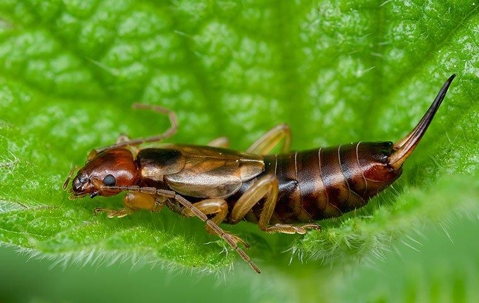Earwigs can be ominous-looking pests to find scurrying across your home. Many people are scared off by the myths about these creatures or afraid of their fierce-looking pincers. In truth, earwigs are probably not as dangerous as they seem, but that doesn't mean you'll want them congregating in your home. Here's what local residents need to know about identifying earwigs, how dangerous they are, why they come inside our homes, and how pest control in Queen Creek can help keep them out.
What Do Earwigs Look Like?
With so many insects named for their appearance, you might be wondering exactly what does an earwig look like? In fact, these insects are named more for the myths that surround them than for their appearance. Earwigs in Queen Creek can grow up to an inch in length. They have six legs and a long, segmented body that ends in a pronounced pair of pincers. While they do have two pairs of wings, they are generally folded under and not obvious to spot. Not all earwigs fly, but even those that can only fly in short bursts.
Earwigs don't resemble anything like ears. They get their name from a European myth claiming that these insects would crawl into people's ears as they slept and tunnel into their brains. Luckily, there is no truth to this tale. Despite this, the earwig's threatening appearance continues to unsettle people.
How Dangerous Are Earwigs?
In reality, earwigs pose a much greater danger to your garden than your health. Earwigs live together in large numbers. When outside, they will gather under piles of lawn debris, mulch, or other cool and moist areas. They eat decaying vegetation and plants found beneath mulch or wet leaves. However, some earwigs will target seedlings, and when this happens, they can devastate a garden. While they are not dangerous to people, some earwigs will also eat smaller anthropods or insects.
Earwigs move quickly and can be startling to come upon, but they don't bite, and they can't spread disease. While many people fear them, earwigs are more apt to use their pincers during reproduction, hunting, or defense. You might get a pinch if you try to handle one of these animals, and while it could be a little painful, an earwig pinch is unlikely to break the skin and will not transfer any venom. The most significant dangers we face with earwigs are damage to our gardens and the nuisance of a large population in our homes.
Why Do I Have Earwigs In My Home?
Earwigs seek out cool, moist locations. They often gather near homes and gardens and can easily slip inside through cracks in your home's exterior. Earwigs are more likely to come inside when food becomes scarce, or there is a change in weather. Inside, you're likely to find earwigs near water sources such as bathrooms, kitchens, and laundry rooms. Homes with leaky plumbing fixtures, inadequate drainage, and poorly ventilated areas are more likely to attract earwig infestations.
What's The Best Way To Get Rid Of Earwigs In My House?
The best way to get rid of earwigs in your house is to prevent them in the first place. You can do this by eliminating sources of excess moisture, sealing cracks and crevices in your exterior walls and foundation, and installing weatherstripping and door sweeps. However, if you already have earwigs in your house, one of the best ways to get rid of them is with professional pest control help from Pro Active Pest Control experts. We can help you eliminate any existing earwig populations and put plans in place to prevent them from returning. Call today to find out more or schedule your service.

